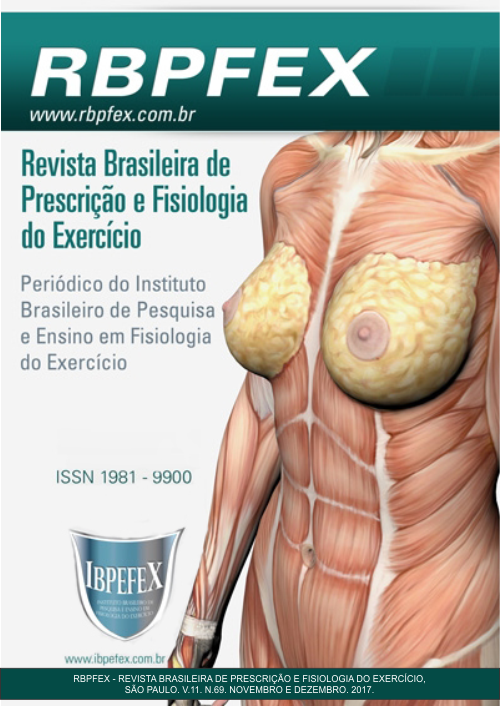Antropometry and muscular force of hemophilic individuals of the city of João Pessoa-PB
Abstract
Introduction: Coagulopathies do not reach a large part of the general population, but those affected by these pathologies may present physiological, psychological and social changes, generating great consequences, among them the reduction of muscle strength levels (NFM) and quality of life (QV). Objective: to evaluate the anthropometry and muscular strength of individuals with hemophilia in the city of João Pessoa-PB. Methodology: The research is descriptive, comparative and transversal. A group of 20 individuals participated, 10 (men) suffering from hemophilia A, and 10 men without hereditary conditions (G2), aged between 18 and 26 years. For the anthropometric evaluation, the InBody 720 System was used. The Smedley® brand analog dynamometer was used as the protocol for the evaluation of muscle strength. We also used the Smedley® brand T16-K dynamometer III to evaluate the ISIII strength levels of LLLs. For the data analysis, the Shapiro-Wilk test was used to verify the normality of the variables and the Mann-Whitney U test with p <0.05. Results: No significant differences were found between the two groups in any of the variables analyzed in the study. It was identified that G1 was higher than G2 in relation to fat percentage (G1 = 17.8%, G2 = 12.6%), fat mass (G1 = 10.9 kg, G2 = 8.5 kg) And visceral fat (G1 = 47.9 kg; G2 = 34.6 kg), however, no significant differences were identified. Conclusion: There are no significant differences between hemophiliacs and healthy individuals in relation to body composition and isometric muscle strength.
References
-Barros, J.F.; Godoy, J.R.P.; Moreira, D.; Junior, W. Força de aperto da preensão palmar com o uso do dinamômetro Jamar: revisão de literatura. Efdeportes. Núm. 79. 2004.
-Beltrame, L.G.N. Atividade Física e Estilo de Vida de Pessoas com Coagulopatias. Revista brasileira de ciências da saúde. Vol. 18. p. 27-33. 2008.
-Henrard, S.; Speybroeck. N.; Hermans, C. Body weight and fat mass index as strong predictors of factor VIII in vivo recovery in adults with hemophilia A. Journal of thrombosis and haemostasis. p. 1784-1790. 2011.
-Hilberg, T.; Herbsleb, M.; Puta, C.; Gabriel, H.H.; Schramm, W. Physical training increases isometric muscular strength and proprioceptive performance in haemophilic subjects. Haemophilia. p. 86-93. 2003.
-Hilberg, T.; Herbsleb, M.; Puta, C.; Gabriel, H.H.; Schramm, W. Proprioception and isometric muscular strength in haemophilic subjects. Haemophilia. p. 582-588. 2001.
-Mathiowetz, V.; Kashman, N.; Volland, G.; Weber, K.; Dowe, M.; Rogers, S.Grip and pinch strength: Normative data for adults. Arch Phys Med Rehabil. Vol. 66. p. 69-72. 1985.
-Muñoz, G.L.F.; Palacios-Espinosa Ximena. Calidad de vida y hemofilia: Unarevisión de la literatura. CES Psicol. p. 169-191. 2015.
-Pravatto, A. Hemofilia: homeostasia e exercício. Revista Brasileira de Prescrição e Fisiologia do Exercício. Vol. 2. Núm. 8. p. 221-232. 2008.
Authors who publish in this journal agree to the following terms:
- Authors retain the copyright and grant the journal the right of first publication, with work simultaneously licensed under the Creative Commons Attribution License BY-NC which allows the sharing of the work with acknowledgment of the authorship of the work and initial publication in this journal.
- Authors are authorized to enter into additional contracts separately for non-exclusive distribution of the version of the work published in this journal (eg, publishing in institutional repository or book chapter), with acknowledgment of authorship and initial publication in this journal.
- Authors are allowed and encouraged to post and distribute their work online (eg, in institutional repositories or on their personal page) at any point before or during the editorial process, as this can bring about productive change as well as increase impact and impact. citation of published work (See The Effect of Free Access).






